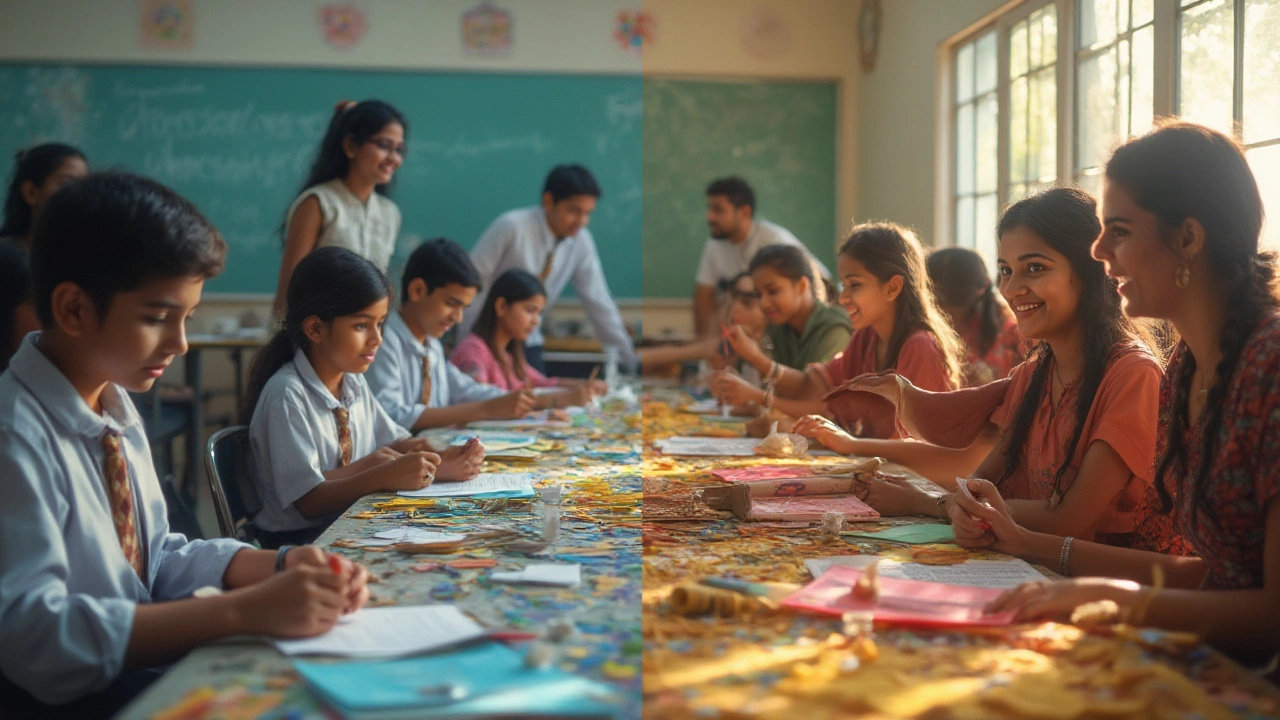Education Comparison: Quick Guides to Exams, Boards, and Online Platforms
Choosing the right study path feels like a game of chess – you need to see the board, know the pieces, and plan a few moves ahead. On this page we line up the biggest education choices in India and beyond, so you can spot the real differences without wading through endless articles.
Key Exam Showdowns
First up, the battle between the two engineering giants: JEE Mains vs JEE Advanced. JEE Mains is the gateway – it tests basic concepts, runs twice a year, and decides if you get a seat in any NIT or IIIT. JEE Advanced is the final hurdle for IITs; it’s longer, tougher, and needs a JEE Mains qualifying score. If you’re aiming for an IIT, start with solid Mains prep and then switch to Advanced‑specific strategies.
Next, the medical side: NEET vs Aakash material. Aakash offers structured notes and video lectures, but many toppers add NCERT textbooks and past‑year questions to fill the gaps. The sweet spot is a blended plan – NCERT for basics, Aakash for concept clarity, and PYQs for exam stamina.
For students weighing school boards, the CBSE vs other syllabi debate is hot. CBSE focuses on a clear, uniform curriculum and is the most common choice for engineering and medical aspirants. International boards like IB or A‑Levels offer project‑heavy assessment and a broader outlook, which can be great for students targeting overseas universities. Look at your long‑term goal: a solid national exam score or a global academic profile.
Board & Platform Face‑offs
When it comes to digital learning, the market is crowded. eLearning platforms such as Coursera, Udemy, and Unacademy each have a niche. Coursera leans on university‑level courses, Udemy gives you niche skill videos, and Unacademy specializes in Indian competitive exams. Your choice should match your goal – deep subject mastery, quick skill upgrades, or exam‑specific drills.
Don’t confuse distance learning with online learning. Distance programs often ship printed materials and require periodic campus visits, while online learning delivers everything via the internet. If you need flexibility and real‑time interaction, online is the way to go. If you prefer a structured schedule with occasional face‑to‑face sessions, distance learning can still work.
We also compared the most used learning platform globally. The winner is a mix of accessibility, low cost, and a wide catalog – usually a platform like Google Classroom combined with YouTube tutorials tops the list. But remember, the best platform for you is the one you actually use daily.
Finally, a quick look at the toughest curricula: the hardest school syllabus showdown pits IB, A‑Levels, and CBSE against each other. IB demands essays, internal assessments, and a Theory of Knowledge component, making it academically intensive. A‑Levels let you specialize early, which can be daunting for students who like variety. CBSE remains rigorous because of its focus on high‑stakes board exams. Choose the syllabus that aligns with your learning style, not just its reputation.
Bottom line: read the fine print, match the format to your lifestyle, and blend resources when needed. No single choice fits everyone, but this side‑by‑side view should make your decision a lot clearer.
American vs CBSE Syllabus: Which Is Easier and Why?
Find out if the American syllabus is really easier than CBSE. This article breaks down learning styles, teaching methods, assessment, and offers tips for students and parents.
read moreIs an MBA Harder than a Master's?
Deciding between an MBA and a Master's degree can be a tough choice. Each has its unique challenges and benefits, with differences in coursework, focus, and career opportunities. An MBA often emphasizes business and management skills, while Master's programs delve deeper into specific fields. Understanding these distinctions helps potential students choose the right path for their career goals.
read more
